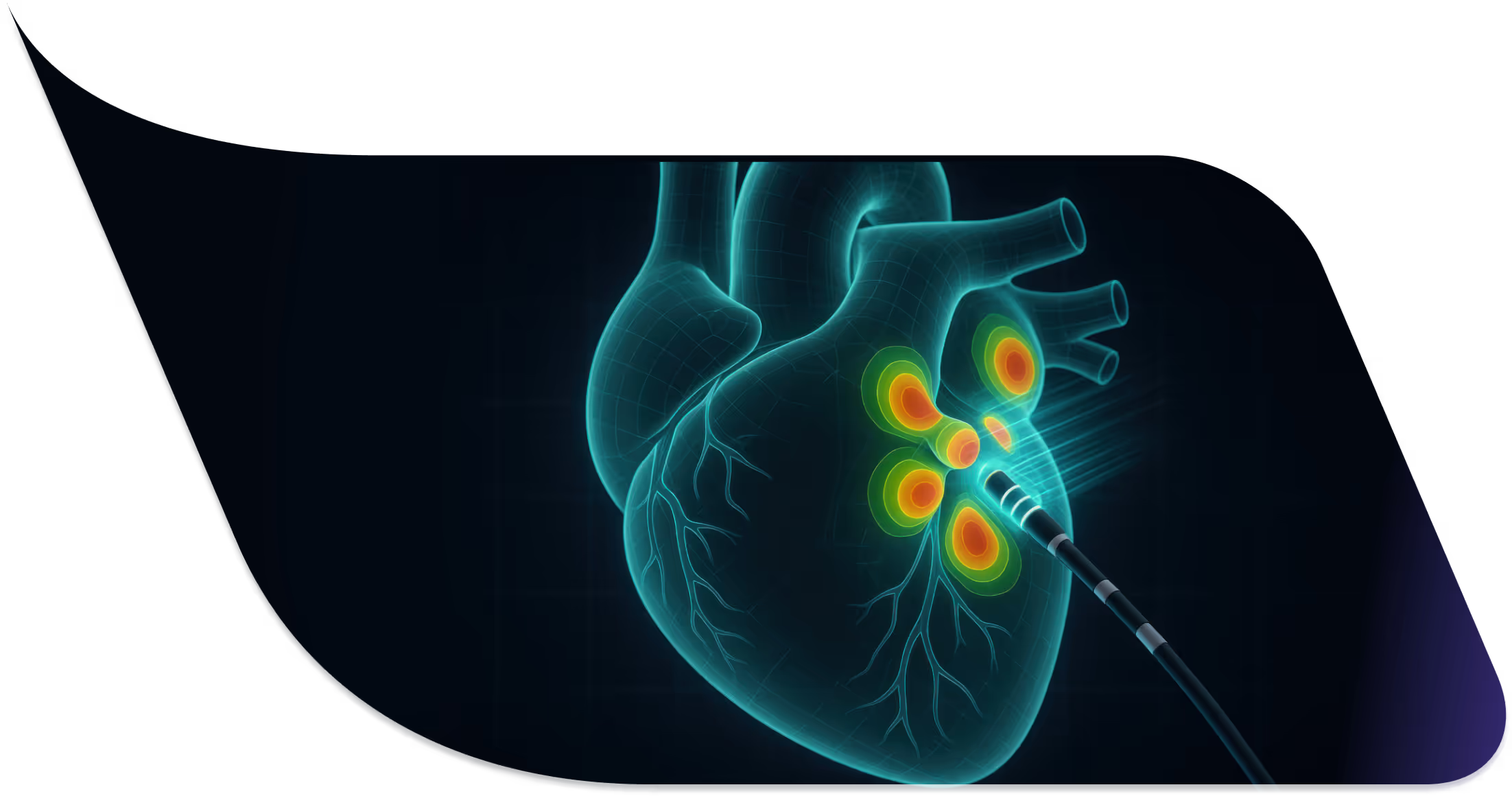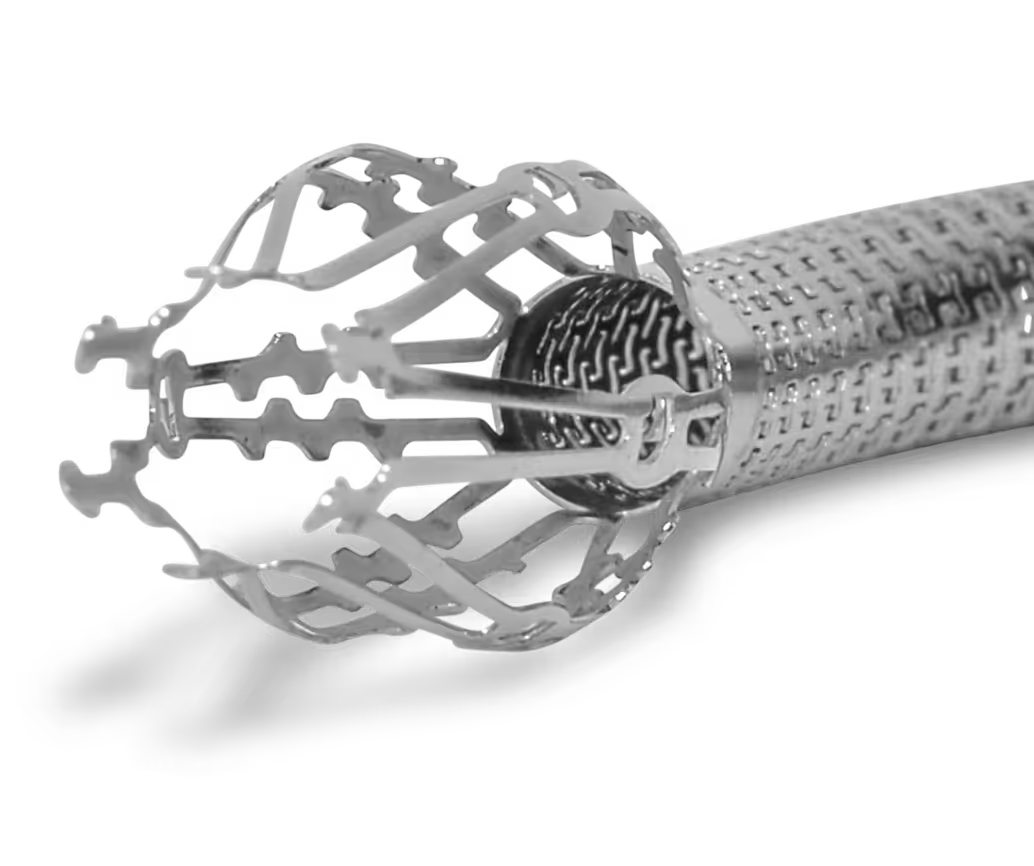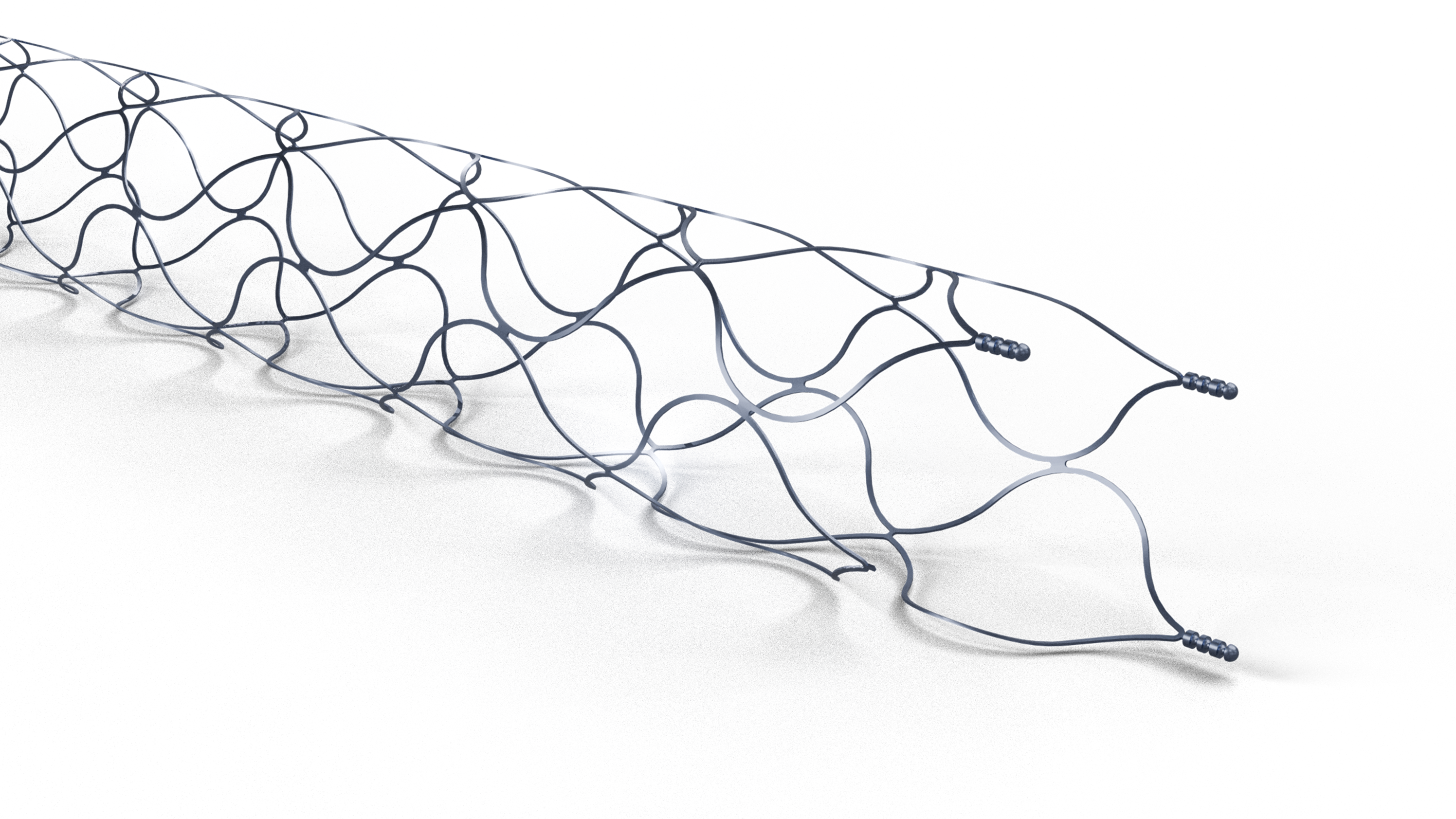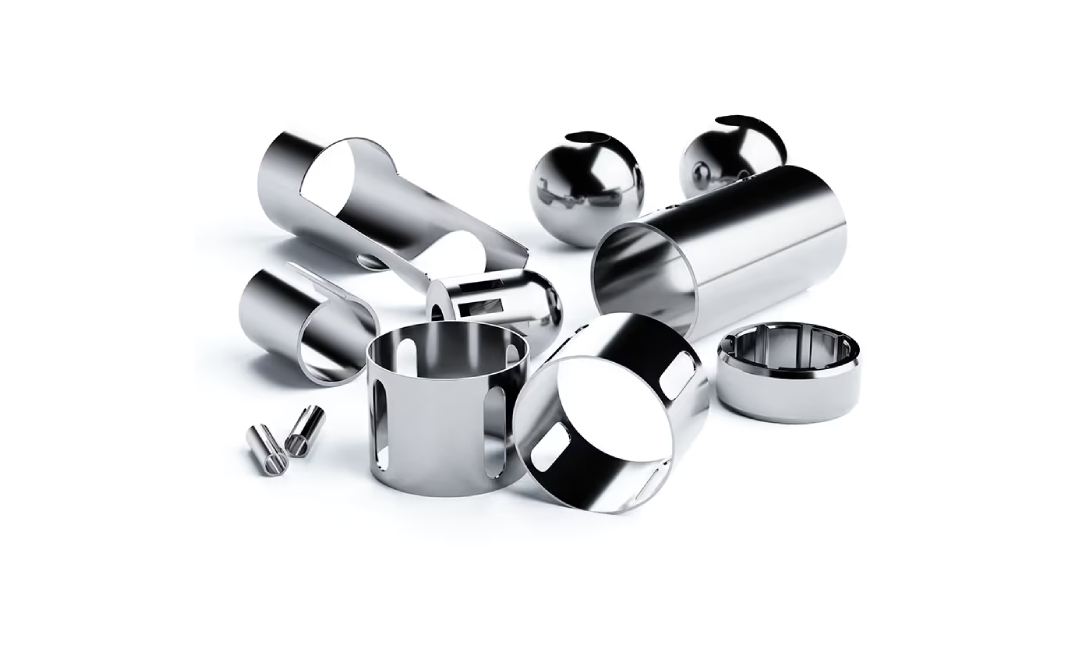.png)
%20(2).avif)

.png)
Cardiac arrhythmias, including atrial fibrillation (AFib), ventricular tachycardia, and other irregular heart rhythm disorders, affect a substantial portion of the global population, with prevalence around 1% and rising due to aging demographics, sedentary lifestyles, and increasing factors like hypertension, diabetes, and obesity. AFib, the most common type, impacts tens of millions worldwide, elevating risks of stroke, heart failure, blood clots, and premature mortality, with symptoms such as palpitations, shortness of breath, fatigue, dizziness, or chest pain that impair daily life. Modern stressors like poor diet, lack of exercise, and environmental factors worsen electrical disturbances in the heart's conduction system, causing inefficient pumping and potential long-term tissue damage. With a lifetime risk of serious heart rhythm disorders reaching up to one in three globally, demand surges for advanced treatments like medications, pacemakers, defibrillators, ablation procedures, and lifestyle interventions, fueling cardiac care R&D for better early detection, personalized therapies, and patient outcomes.
Platinum’s durability, inertness, and electrical conductivity makes it an ideal electrode material for devices such as pacemakers and defibrillators. The early generation devices have leads with either active fixation electrodes or passive fixation electrodes. The electrodes deliver electrical impulses to the heart muscle—in the case of a pacemaker, these ensure that the heart beats regularly and at an appropriate pace, while in the case of a defibrillator, a much stronger electrical shock is delivered as soon as the device detects a dangerously irregular heartbeat. Each lead typically has one titanium nitride coated platinum-iridium electrode, two or more ring electrodes, and platinum feed through connectors, used to connect the pulse generator to the lead. The latest generation of implantable generators have precision machined parts made up of precious metals that assist with the device’s functions.
Electrophysiology (EP) catheters, including pulsed field ablation (PFA) catheters, feature electrodes at the tip that are threaded through an artery into the heart to record electrical activity, emit impulses to test the heart's response, or—in the case of PFA—deliver non-thermal pulsed electrical fields for precise, safer tissue ablation in treating conditions like atrial fibrillation, which affects tens of millions globally and is rising with aging populations. Lighteum Medical supplies a variety of precious metal and nitinol components for EP and PFA catheters, including custom shape-set nitinol components and nitinol cages that enable flexible, conformable electrode arrays for optimal tissue contact. We collaborate with industry leaders in EP from initial concept and design stages to develop precision micromachined irrigation tip electrodes, ring electrodes, marker bands, and other precious metal and nitinol components. Beyond the metal parts, our coatings and surface treatments applied to these components optimize the performance of catheters in these procedures. Additionally, our metal management solutions help customers maintain supply chain continuity to meet their ongoing needs.
EP catheters have an electrode on the end of the catheter that is threaded through an artery into the heart to record electrical activity while emitting electrical impulses to test the heart’s response. JM provides a variety of precious metal components for EP catheters.We partner with the leaders in EP from the early concept and design phases to develop precision micromachined irrigation tip electrodes, ring electrodes, marker bands and other precious metal components. In addition to the metal component, our coatings and surface solutions applied to our components enhance the performance of the catheters used in these procedures. We also have metal management solutions for our customers to maintain supply chain continuity for their immediate needs.

We have a longstanding relationship with Lighteum Medical and are a satisfied customer. They have particularly strong expertise and extensive experience in precious metals procurement, management, and fabrication, and there are not that many companies which can do that …”
-Manager,
Leading Electrophysiology Ablation Catheter OEM
%20(2).avif)
.avif)
%20(2).avif)
.avif)

Elevate neurovascular patient outcomes with precision manufactured embolization coils, nitinol self-expanding stents, flow diverters, and radiopaque markers.
Learn more.png)
Our laser-cut nitinol components and precious metal products are essential for advancing minimally invasive endovascular surgical techniques in vascular and peripheral vascular interventions.
Learn more.avif)
Outside of our featured therapy areas, our precious metal and nitinol product portfolios are well-suited for applications in other markets like neurostimulation, structural heart, ophthalmology, and cochlear.
Learn more
Platinum’s durability, inertness, and electrical conductivity makes it an ideal electrode material for devices such as pacemakers and defibrillators.
Learn more.jpg)
The next generation neurostimulation devices rely upon complex engineering of micromachined miniature components
Learn more%20(1).avif)
Peripheral artery disease (PAD) is a global public health and socioeconomic problem affecting millions
Learn more.avif)
Outside of our key therapy areas, our product portfolio includes precious metal and nitinol components.
Learn more